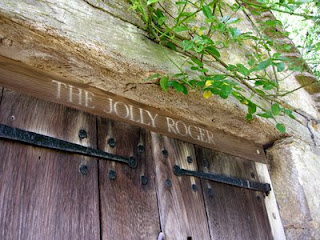



Snowhill Manor, Gloucestershire - National Trust
I went to visit this place on Sunday as it promised to be fine weather and l wanted to see this collection of artefacts gathered together by Mr Wade who lived their c.1900s. He was a bit of an eccentric and all his collection of objects, which came from all over the world, were housed in the house whilst he spent most of his time living in the priest's house opposite! Above his bed he hung a stuffed bat which the NT staff there fondly call Ruby! It is alleged that writers, actors and artists met there for fancy dress parties in the Great Hall or Dragon room (because of the big fireplace). All the wealth came from a sugar plantation in the West Indies, St Kitts, which only his wife visited on a regular basis to manage the estate.
It a bit like visiting someones attic, the objects although quite interesting seemed rather a "hotch potch" as l overheard someone saying, and the only African mask which was a bronze tourist replica of a Yoruba leopard motif, was in amongst delicate jewelry of mixed origin.
However as l was wondering around the garden l noticed a little house with a set of stairs leading up to it reminiscent of Charles Simmonds work, which held my attention and reinforced my continuing interest in architecture, walls and floors. This l thought might have potential for something.








